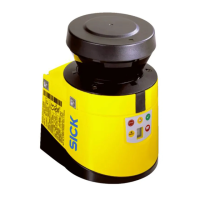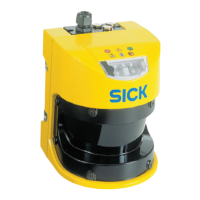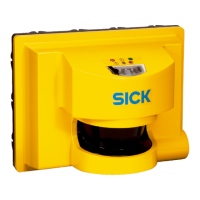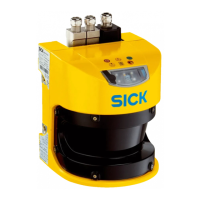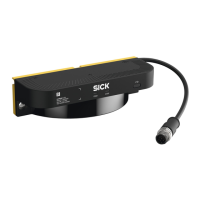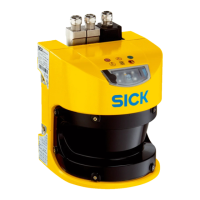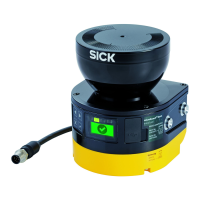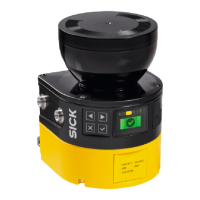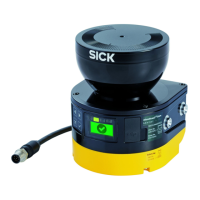Chapter 14 Operating instructions
S3000
174 © SICK AG • Industrial Safety Systems • Germany • All rights reserved 8009942/WK81/2012-11-28
Subject to change without notice
Annex
14.5 List of illustrations
F
ig. 1: Principle of operation, time-of-flight measurement by the S3000 ...................17
Fig. 2: Principle of operation, rotation of the S3000 .................................................... 18
Fig. 3: Triple field mode with one protective field and two warning fields................... 19
Fig. 4: Monitoring cases ................................................................................................. 20
Fig. 5: Monitoring possibilities with the S3000............................................................. 20
Fig. 6: Simultaneous monitoring .................................................................................... 21
Fig. 7: Sensor head, I/O module and system plug........................................................21
Fig. 8: Protective field ranges of the sensor heads....................................................... 22
Fig. 9: Available I/O modules ......................................................................................... 22
Fig. 10: Status indicators on the S3000.......................................................................... 27
Fig. 11: S3000 Remote in combination with a Flexi Soft safety controller or
another S3000 .................................................................................................... 28
Fig. 12: EFI systems comprising two safety laser scanners ........................................... 29
Fig. 13: EFI system with sens:Control device .................................................................. 29
Fig. 14: EFI system with Flexi Soft safety controller........................................................ 30
Fig. 15: EFI network topologies ........................................................................................ 30
Fig. 16: Calculation of pulses per cm travel .................................................................... 40
Fig. 17: Tolerances allowed on the dynamic inputs ........................................................42
Fig. 18: Possible ways of monitoring case switching ...................................................... 43
Fig. 19: Schematic outline of the operation with restart interlock.................................49
Fig. 20: Configuration example universal I/O connections of the S3000 ..................... 50
Fig. 21: Creating a field set in the CDS ............................................................................ 52
Fig. 22: Configuring protective field and warning field ...................................................53
Fig. 23: Reading the protective field ................................................................................ 54
Fig. 24: Schematic diagram of contour as reference...................................................... 55
Fig. 25: Contour as reference for vertical operation ....................................................... 56
Fig. 26: Example for velocity routing on an AGV.............................................................. 61
Fig. 27: Connection diagram for velocity routing............................................................. 61
Fig. 28: Example for velocity routing in the Flexi Soft Designer ..................................... 62
Fig. 29: Schematic layout of the monitoring case switching .......................................... 64
Fig. 30: Horizontally mounted stationary application...................................................... 67
Fig. 31: Danger of reaching over (mm) ............................................................................ 70
Fig. 32: Mounting variations for the scan plane.............................................................. 71
Fig. 33: Relationship between resolution and protective field mounting height........... 72
Fig. 34: Access protection ................................................................................................ 73
Fig. 35: Minimum distance to the hazardous area ......................................................... 75
Fig. 36: Stopping distance................................................................................................ 78
Fig. 37: Braking distance as a function of the vehicle velocity ...................................... 78
Fig. 38: Supplement due to lack of ground clearance.................................................... 80
Fig. 39: Diagram of ground clearance of the vehicle ...................................................... 80
Fig. 40: Protective field width ........................................................................................... 81
Fig. 41: Mounting height................................................................................................... 81
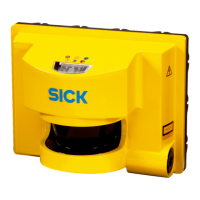
